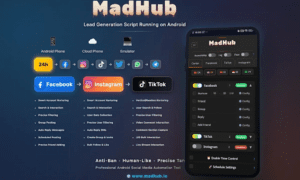Introduction
Cryptocurrency has become one of the most talked-about financial topics of the past decade. Whether it’s Bitcoin making headlines or Ethereum supporting the next generation of online services, digital currencies are changing how we think about money.
But what exactly is cryptocurrency, and how does it work? More importantly, how can everyday people benefit from it without needing to be tech experts?
In this article, we’ll explain everything in simple terms. You’ll learn what cryptocurrency is, how it’s created, how transactions are made, and why millions of people are investing in it. If you’re completely new to this world, don’t worry — this guide was made for you.
Switzerland is known not only for banks and watches, but also for being a global leader in cryptocurrency innovation. The region of Zug, also known as Crypto Valley, is home to dozens of blockchain companies, offering a supportive environment for digital finance. It’s no surprise that Swiss-based platforms have set the standard for security and trust.
One of these platforms is Beitrag Kaldorix. Designed for both beginners and experienced traders, it provides an easy and secure way to buy, sell, and invest in digital assets. Whether you’re exploring cryptocurrency for the first time or looking to automate your trading strategy, Beitrag Kaldorix makes it simple to get started — all with Swiss quality and reliability.
Let’s begin your journey into the world of cryptocurrency.
What Is Cryptocurrency?
Cryptocurrency is a form of digital money. Unlike traditional currencies such as the Swiss franc or the euro, it exists only in electronic form. You can’t hold it in your hand, but you can store it, send it, and receive it just like regular money.
The word “cryptocurrency” comes from “cryptography” — the science of protecting information. This technology makes digital money safe to use and nearly impossible to counterfeit. Every transaction is verified using secure code.
Think of cryptocurrency as the digital version of cash. You don’t need a bank to send it. You don’t need permission from a third party. It’s just you, your wallet, and the network.
Key Features of Cryptocurrency
- Decentralization: No single authority (like a bank or government) controls it.
- Transparency: All transactions are recorded on a public ledger called the blockchain.
- Limited supply: Most cryptocurrencies have a fixed number of coins. For example, only 21 million Bitcoins will ever exist.
Some of the most well-known cryptocurrencies include:
| Cryptocurrency | Main Use | Launch Year |
| Bitcoin (BTC) | Digital gold, store of value | 2009 |
| Ethereum (ETH) | Smart contracts, decentralized apps | 2015 |
| Litecoin (LTC) | Fast, low-cost payments | 2011 |
Why Do People Use Cryptocurrency?
People use cryptocurrencies for different reasons:
- Investment: Many see digital assets as an alternative to stocks or gold.
- Payments: You can send money across borders quickly and cheaply.
- Financial freedom: Cryptocurrencies give users full control over their funds, especially in countries with weak banking systems or high inflation.
With platforms like Beitrag Kaldorix, you can access a wide range of cryptocurrencies and start using or investing in them in just a few clicks — no technical background needed.
How Blockchain Technology Works
At the heart of every cryptocurrency is a technology called blockchain. Understanding blockchain is key to understanding how cryptocurrencies function.
Imagine a digital notebook that records every transaction. But instead of one person owning this notebook, it’s shared across thousands of computers around the world. This notebook is called the blockchain — a secure, decentralized ledger of all crypto activity.
What Is a Block and a Chain?
A block is a group of recent transactions bundled together. Once a block is full, it’s linked to the previous block — creating a chain of blocks. This chain continues to grow every time new transactions occur.
Each block contains:
- A list of transactions
- A timestamp
- A special cryptographic code (called a hash)
This system ensures that no one can alter past transactions without breaking the entire chain — which is nearly impossible.
Decentralization: No Central Authority
In traditional finance, a central bank verifies your transaction. In blockchain, the network of users (called nodes) does the job. These nodes work together to validate every new block.
Because no single entity controls the blockchain, it’s more transparent and secure. Everyone sees the same version of the data, and it’s incredibly hard to tamper with.
Public vs Private Blockchains
- Public blockchain: Open to anyone. Bitcoin and Ethereum use this model.
- Private blockchain: Used by organizations for internal purposes, where access is limited.
In Switzerland, blockchain is already transforming industries. For example, in the city of Zug — known as Crypto Valley — citizens can pay taxes using Bitcoin. Swiss banks and tech companies use private blockchains for secure document verification and cross-border payments.
Beitrag Kaldorix, based in Switzerland, applies blockchain technology to create a secure and fully automated cryptocurrency platform. It allows users to trade, store, and invest in digital assets with confidence and clarity.
How New Coins Are Created (Mining and Staking)
Cryptocurrencies don’t come from a printing press. Instead, new coins are created through two main processes: mining and staking. These methods also help keep the blockchain running smoothly and securely.
Mining: Solving Puzzles to Earn Coins
Mining is the original way cryptocurrencies like Bitcoin are created. It involves powerful computers solving complex mathematical puzzles. When a puzzle is solved, a new block is added to the blockchain, and the person who solved it receives a reward in the form of coins.
This method is known as Proof-of-Work (PoW). It’s secure, but it uses a lot of energy and requires expensive hardware.
For example:
- To mine one Bitcoin block, you might need a machine running 24/7 for weeks.
- The electricity cost can be higher than the reward for casual users.
Staking: A Greener Alternative
Many modern cryptocurrencies use a method called Proof-of-Stake (PoS). Instead of solving puzzles, users “stake” their coins — locking them in the network. In return, they get a chance to validate new blocks and earn rewards.
Staking is more energy-efficient and accessible. It also gives investors a way to earn passive income without expensive equipment.
Ethereum’s Shift to PoS
Ethereum, one of the most widely used cryptocurrencies, recently moved from PoW to PoS. This reduced its energy usage by more than 99%. It was a major step toward a greener blockchain future.
Easy Entry Through Beitrag Kaldorix
Setting up mining or staking on your own can be complicated. You need technical knowledge, equipment, and time. That’s why platforms like Beitrag Kaldorix are so helpful.
Instead of managing everything yourself, Beitrag Kaldorix offers automated access to staking rewards and crypto investing. It handles the complexity behind the scenes, letting you focus on growing your digital assets safely and easily — no hardware required.
How Transactions Work
Sending cryptocurrency is fast and simple — once you understand the basics. Let’s walk through how a crypto transaction works from start to finish.
Step-by-Step: Sending Crypto
- You open your cryptocurrency wallet (software or hardware).
- You enter the recipient’s address (similar to an email, but for crypto).
- You choose the amount to send and confirm the transaction.
Once sent, your transaction is broadcast to the blockchain network. Computers (called nodes) check that you have enough funds and that the request is valid. If all checks out, your transaction is added to a new block.
What Are Public and Private Keys?
To use cryptocurrency, you need two digital keys:
- Public key: This is your wallet address. You can share it with others to receive crypto.
- Private key: This is like your password. It proves that you own your coins. Never share it with anyone.
When you send coins, you “sign” the transaction with your private key. This proves it’s really you, and not someone pretending to be you.
Fees and Speed
Each transaction includes a small network fee. The fee can vary depending on network activity and the currency you’re using. Some blockchains process payments in seconds, others can take a few minutes.
Simplified by Beitrag Kaldorix
On traditional crypto platforms, managing addresses and transaction details can feel overwhelming. But on Beitrag Kaldorix, the process is simplified. The platform’s user-friendly interface helps you send and receive cryptocurrency quickly — even if it’s your first time.
With clear instructions and smart automation, Beitrag Kaldorix makes it easy to move digital money with just a few clicks.
Cryptocurrency Wallets: Where Your Coins Live
A cryptocurrency wallet is where you store your digital assets. Unlike a physical wallet, it doesn’t actually hold coins. Instead, it stores the keys that give you access to your crypto.
Types of Wallets
There are several kinds of wallets, each offering different levels of security and convenience:
- Custodial wallets: These are managed by a platform or exchange. They handle the technical side for you. Beitrag Kaldorix offers a secure custodial wallet built into its platform.
- Non-custodial wallets: You manage the keys yourself. It gives you full control, but also full responsibility.
Hot vs Cold Wallets
Wallets are also categorized by how they connect to the internet:
- Hot wallets: Always connected to the internet (e.g., mobile apps or web platforms). Great for daily use but more exposed to online threats.
- Cold wallets: Offline storage like USB devices (e.g., Ledger, Trezor). These are very secure but less convenient for quick transactions.
Why Wallet Security Matters
Whoever holds the private key owns the coins. That’s why losing your private key means losing access to your funds — forever. It’s like losing the only key to a locked safe.
Extra Protection Features
Modern wallets include features to keep your assets safer:
- Two-Factor Authentication (2FA)
- Multi-signature access (multiple approvals required)
- Biometric login
How Beitrag Kaldorix Keeps Your Funds Safe
Beitrag Kaldorix uses bank-grade security to protect user wallets. Funds are held in a combination of hot and cold storage systems to balance speed and safety. Your private keys are never exposed.
This makes it an ideal solution for beginners who want convenience — and for investors who demand strong protection.
Most Popular Cryptocurrencies
There are thousands of cryptocurrencies available today. But a few have become widely trusted and commonly used around the world. Let’s take a look at the most popular ones.
| Cryptocurrency | Symbol | Main Purpose |
| Bitcoin | BTC | Digital gold, store of value |
| Ethereum | ETH | Smart contracts and decentralized apps |
| Litecoin | LTC | Fast and cheap transactions |
| Solana | SOL | Scalable blockchain for fast apps |
| Cardano | ADA | Academic approach to smart contracts |
| Avalanche | AVAX | Flexible platform for DeFi and NFTs |
| USDT / USDC | Stablecoins | Linked to the US dollar for price stability |
Why These Cryptos Stand Out
- Bitcoin is considered the first and most valuable cryptocurrency. People call it “digital gold.”
- Ethereum is the foundation for smart contracts and many blockchain apps.
- Stablecoins like USDT and USDC are used to avoid volatility and move funds easily between exchanges.
Each of these coins has different strengths and use cases. That’s why platforms like Beitrag Kaldorix offer access to a wide range of digital assets. Whether you want to hold long-term, trade daily, or explore the world of DeFi, you can do it all in one place — with clarity and security.
Benefits and Risks of Using Cryptocurrency
Like any financial tool, cryptocurrency has both advantages and risks. Knowing both sides helps you make smart, informed decisions.
Benefits
- Fast and low-cost transfers: Crypto allows you to send money anywhere in the world in minutes, often with lower fees than traditional banks.
- Financial freedom: You control your own money, with no middlemen. It’s especially useful in countries with unstable currencies or strict banking rules.
- Protection against inflation: Many cryptocurrencies have limited supply. For example, only 21 million Bitcoins will ever exist, making it a hedge against inflation.
- Open access: Anyone with a smartphone can open a wallet and start using crypto — no credit checks or bank accounts required.
Risks
- Volatility: Prices can change quickly. One day your investment grows, the next it drops. Crypto is not guaranteed income.
- Security responsibility: If you lose your private key or fall for a scam, you could lose your funds forever.
- Regulatory uncertainty: Laws about crypto are changing. In some countries, it’s still unclear how it will be taxed or regulated.
How Beitrag Kaldorix Helps You Stay Safe
To reduce these risks, platforms like Beitrag Kaldorix offer built-in protections and guidance. You don’t have to worry about managing keys manually or falling into common traps. The system uses advanced security tools and smart automation to protect your investments.
Plus, since it’s based in Switzerland — a country known for financial stability and strong regulation — you can feel more confident in your trading and investing journey.
Real Use Cases and Swiss Perspective
Cryptocurrency is more than just an investment trend. It’s already being used around the world in everyday situations — including in Switzerland.
Where Crypto Is Used Today
Here are a few real-world examples of how digital currencies are being used:
- Online payments: Many websites accept Bitcoin and other coins as payment for goods and services.
- Cross-border transfers: People use crypto to send money abroad faster and cheaper than banks.
- Decentralized finance (DeFi): Platforms like Uniswap or Aave allow users to lend, borrow, and earn interest — without a bank.
- Charity: Nonprofits like the Red Cross accept crypto donations to reach more global donors.
Switzerland: A Crypto-Friendly Country
Switzerland is one of the most advanced countries in crypto adoption. The city of Zug — also called Crypto Valley — is home to hundreds of blockchain startups. Local authorities even allow residents to pay taxes in Bitcoin.
Swiss banks are also embracing blockchain. Some now offer crypto custody services and trading accounts. This shows a strong national interest in supporting digital assets.
Beitrag Kaldorix: A Swiss Solution
Beitrag Kaldorix is part of this movement. As a Swiss-based platform, it combines advanced blockchain technology with trusted financial infrastructure. It offers a full solution for:
- Buying and selling cryptocurrencies
- Automated trading strategies
- Secure storage and wallet management
The platform is built with both beginners and experienced investors in mind. It follows Swiss standards of privacy, security, and user protection — helping you explore the crypto world with confidence.
Conclusion
Cryptocurrency is no longer just a buzzword — it’s a growing part of the global economy. From fast payments to long-term investments, it offers real benefits for people who want more control over their money.
In this article, we covered the basics: how cryptocurrency works, why blockchain is important, how coins are created, and how to use wallets and platforms safely. We also explored real-life applications, especially in forward-thinking countries like Switzerland.
But understanding is only the first step. If you’re ready to try crypto for yourself, you don’t have to do it alone.
Beitrag Kaldorix gives you the tools to get started — whether you’re trading, investing, or just learning. With secure technology, Swiss-level trust, and an easy-to-use platform, it’s never been simpler to explore the digital asset world.
The future of money is here — and with Beitrag Kaldorix, it’s within your reach.





























